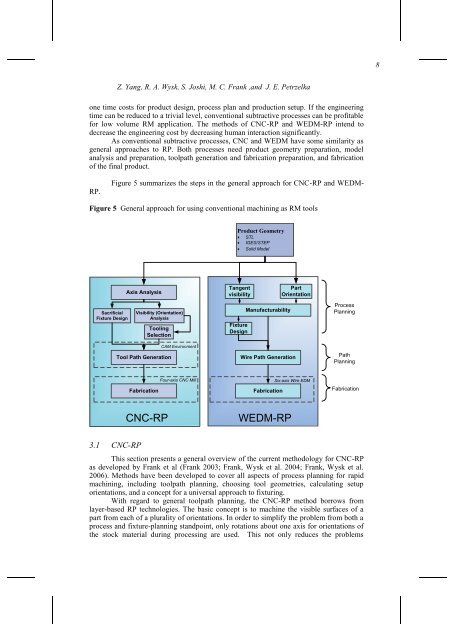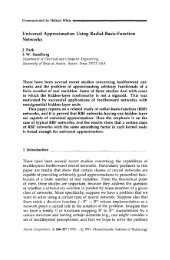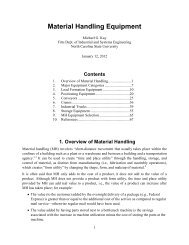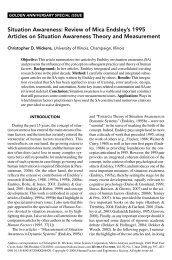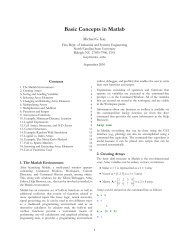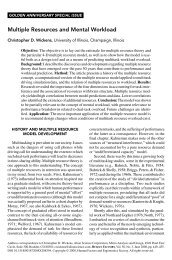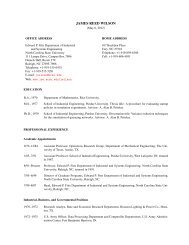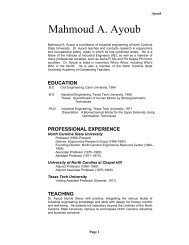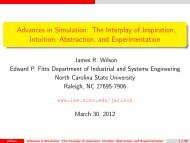Conventional Machining Methods for Rapid Prototyping
Conventional Machining Methods for Rapid Prototyping
Conventional Machining Methods for Rapid Prototyping
You also want an ePaper? Increase the reach of your titles
YUMPU automatically turns print PDFs into web optimized ePapers that Google loves.
8<br />
Z. Yang, R. A. Wysk, S. Joshi, M. C. Frank ,and J. E. Petrzelka<br />
one time costs <strong>for</strong> product design, process plan and production setup. If the engineering<br />
time can be reduced to a trivial level, conventional subtractive processes can be profitable<br />
<strong>for</strong> low volume RM application. The methods of CNC-RP and WEDM-RP intend to<br />
decrease the engineering cost by decreasing human interaction significantly.<br />
As conventional subtractive processes, CNC and WEDM have some similarity as<br />
general approaches to RP. Both processes need product geometry preparation, model<br />
analysis and preparation, toolpath generation and fabrication preparation, and fabrication<br />
of the final product.<br />
RP.<br />
Figure 5 summarizes the steps in the general approach <strong>for</strong> CNC-RP and WEDM-<br />
Figure 5 General approach <strong>for</strong> using conventional machining as RM tools<br />
Product Geometry<br />
STL<br />
IGES/STEP<br />
Solid Model<br />
Sacrificial<br />
Fixture Design<br />
Axis Analysis<br />
Visibility (Orientation)<br />
Analysis<br />
Tooling<br />
Selection<br />
Tool Path Generation<br />
CAM Environment<br />
Tangent<br />
visibility<br />
Fixture<br />
Design<br />
Manufacturability<br />
Wire Path Generation<br />
Part<br />
Orientation<br />
Process<br />
Planning<br />
Path<br />
Planning<br />
Fabrication<br />
Four-axis CNC Mill<br />
Fabrication<br />
Six-axis Wire EDM<br />
Fabrication<br />
CNC-RP<br />
WEDM-RP<br />
3.1 CNC-RP<br />
This section presents a general overview of the current methodology <strong>for</strong> CNC-RP<br />
as developed by Frank et al (Frank 2003; Frank, Wysk et al. 2004; Frank, Wysk et al.<br />
2006). <strong>Methods</strong> have been developed to cover all aspects of process planning <strong>for</strong> rapid<br />
machining, including toolpath planning, choosing tool geometries, calculating setup<br />
orientations, and a concept <strong>for</strong> a universal approach to fixturing.<br />
With regard to general toolpath planning, the CNC-RP method borrows from<br />
layer-based RP technologies. The basic concept is to machine the visible surfaces of a<br />
part from each of a plurality of orientations. In order to simplify the problem from both a<br />
process and fixture-planning standpoint, only rotations about one axis <strong>for</strong> orientations of<br />
the stock material during processing are used. This not only reduces the problems


